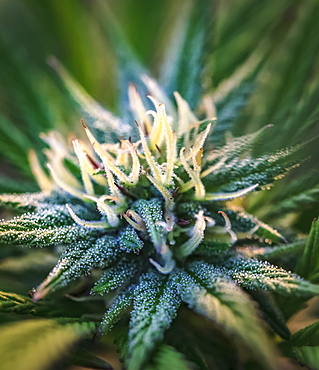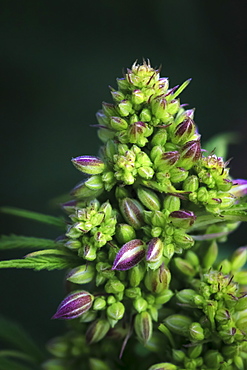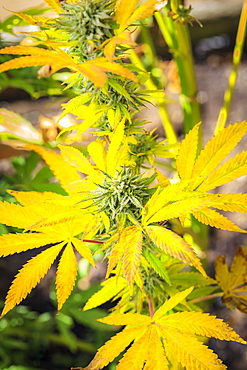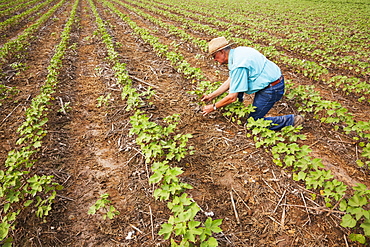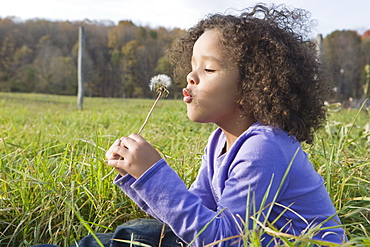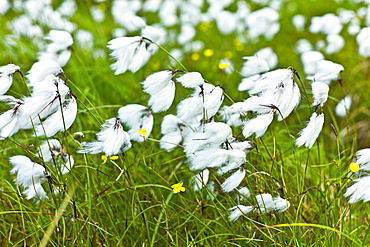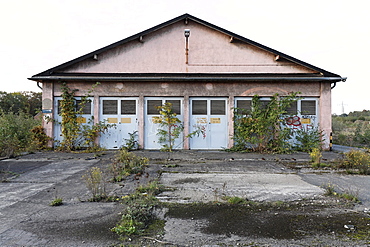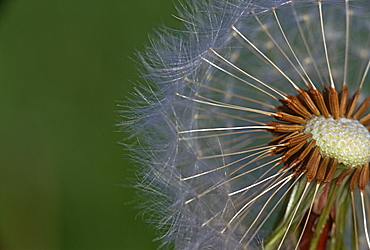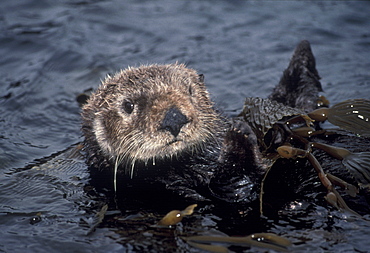Recent searches
Loading...
1178-38990 - Caucasian woman wearing headdress in forest
832-393372 - Gorgeous professional weed (Erigeron speciosus) Aspen professional weed, flower, North America, Germany, Europe
1178-35385 - Middle Eastern woman wearing flower crown holding wheat
1178-36666 - Caucasian woman wearing traditional clothing examining twig
832-392640 - Red sorrel, sheep's sorrel, field sorrel or sour weed (Rumex acetosella) growing beside danubia river at sunset, bavaria, Germany, Europe
1350-596 - Industrial Hemp (Cannabis sativa) growing commercially on the eastern shore of Maryland
1350-595 - Industrial Hemp (Cannabis sativa) growing commercially on the eastern shore of Maryland
1116-50608 - Landscaper trimming bushes with an electric trimmer
1116-50607 - Landscaper with an electric weed trimmer and ear protectors
1116-49939 - Weed Flower Covered In Thick Hoarfrost In The Portage Area, Southcentral Alaska In Late Autumn.
1116-47766 - Extreme close-up of a cured cannabis seed pod, branch and flower with visible trichomes and rays of enlightenment emminating from it, Marina, California, United States of America
1116-47769 - Close-up of a maturing cannabis plant and flower with visible trichomes, Marina, California, United States of America
1116-47767 - Close-up of a maturing cannabis plant and flower with visible trichomes, Marina, California, United States of America
1116-47770 - Close-up of a maturing male cannabis plant, flower and seeds, Marina, California, United States of America
1116-48394 - A cute little girl looking at a dandelion in a park late in the afternoon of a warm fall day, Spruce Grove, Alberta, Canada
1116-47768 - Close-up of a maturing cannabis plant and flower with visible trichomes, Marina, California, United States of America
1116-46462 - Extreme Close Up Looking Down On The Plant Of A Dandelion Fuzzy Seeds, Calgary, Alberta, Canada
1174-6855 - Vintage motel sign with dry scrub-land in foreground, Whitman County, Palouse, Washington, United States of America
1174-6854 - Summer wheat field divided by weeds and harvest half, Whitman County, Palouse, Washington
1116-42775 - Agriculture - Field of wheat stubble being burned after the harvest to control diseases, reduce weed competition and to make the next planting easier. Volunteer fire fighters use the burning for training / near Williams, California, USA.
1270-32 - A young girl helps to weed the field of cabbages on her family farm, Ethiopia, Africa
1270-109 - A woman using a hoe to weed vegetables, Uganda, Africa
1179-2142 - Thistle flowers and rocky peaks framed by pink clouds at sunrise, Braulio Valley, Stelvio Pass, Valtellina, Lombardy, Italy, Europe
1116-39471 - No till Roundup ready cotton in approximately 8-10 leaf stage with volunteer cotton, England, Arkansas, United States of America
832-369786 - St John's wort, Tipton's Weed, Chase-devil, or Klamath weed (Hypericum perforatum), medicinal plant
832-372242 - Dugong (Dugong dugon), feeding on sea weed, Golden Trevallys (Gnathodon speciosus), Pilot Fish, Great Barrier Reef, UNESCO World Heritage Site, Queensland, Cairns, Australia, Pacific Ocean
832-369787 - St. John's, Tipton's Weed, Chase-devil or Klamath weed (Hypericum perforatum), medicinal plant
1167-273 - River weed and marsh marigolds (Caltha Palustris) of Lathkill Dale in spring, Peak District National Park, Derbyshire, England, United Kingdom, Europe
832-362616 - Common Ragweed, Ambrosia artemisiifolia
832-362615 - Common Ragweed, Ambrosia artemisiifolia
832-362614 - Common Ragweed, Ambrosia artemisiifolia
166-5485 - Rock and weed in harbour at Gasvaer, Kvalfjord, Troms, North Norway, Norway, Scandinavia, Europe
832-252338 - Various types of colourful Seaweed (Macrocystis), brown, yellow, green, red
832-238670 - Salicornia or Pickle Weed, Sylt Island, North Frisia, Schleswig-Holstein, Germany, Europe
1161-6812 - Bog Cotton, cotton-grass, Eriophorum blowing in the wind at Cleggan, Connemara, County Galway
1161-6832 - Derelict house with development potential at Rosmuck in the Gaeltecht area of Connemara, County Galway, Ireland
1161-5360 - Set-aside margin of wildflowers for wildlife habitat by wheat field in The Cotswolds, Oxfordshire, UK
1161-4750 - Rajbagh Lake and Maharaja of Jaipur Hunting Lodge in Ranthambhore National Park, Rajasthan, Northern India
1161-5361 - Set-aside margin of wildflowers for wildlife habitat by wheat field in The Cotswolds, Oxfordshire, UK
1161-6831 - Old stone traditional cottage with block stones at Rosmuch, Connemara, County Galway, Ireland
832-203586 - Vacant factory buildings, overgrown terrain, former Ausbesserungswerk repair shop of German Railways, vacant, closed in 2003, Duisburg-Wedau, North Rhine-Westphalia, Germany, Europe
832-188374 - Landscape at the Etang de l'Imperial east of Saintes-Maries-de-la-Mer, Camargue nature reserve, Provence, southern France, France, Europe
832-190573 - Autumn mood at the Five-Color Pond in which dead trees are lying, and seaweed and sea grass is growing, Jiuzhaiguo Valley, Jiuzhaiguo National Park, Sichuan, China, Asiaan, China, Asia
832-166804 - Huge cumulus cloud above the vast landscape of the Camargue, Alpilles in the back, Alpilles, Provence, southern France, France, Europe
832-108187 - Anchor Bay, Mendocino County, California, USA
832-91017 - Neptune's necklace (Hormosira banksii), mangrove swamp, Opua, Bay of Islands, North Island, New Zealand
832-45461 - Evening mood at Skagsanden, beach near Flakstad, Flakstadsoya, Lofoten Islands, Nordland, Norway, Europe
832-45458 - Evening mood at Skagsanden, beach near Flakstad, Flakstadsoya, Lofoten Islands, Nordland, Norway, Europe
832-45457 - Evening mood at Skagsanden, beach near Flakstad, Flakstadsoya, Lofoten Islands, Nordland, Norway, Europe
1113-82004 - India Kerala backwaters indian people in canoe
1113-82005 - India Kerala backwaters indian people in canoe
1116-29638 - California coast, Reeds illuminated by bright sunset over ocean.
1116-21058 - Common Dock (weed) with Aspen Trees in Fog, near St. Adolphe, Manitoba
1116-19637 - Rocky shoreline of Lake Winnipeg, Hecla Island, Manitoba
857-32319 - The weed eating goats of Ewe4ic Ecological Services are herded across the street from a mall in Cheyenne, Wyoming. The herd of approxiamately 1200 goats travels all over the western U.S. with their owner, Lani Malmberg. Goats are an ecologically sound method of weed clearing and land management.
1198-643 - Field of common dandelion flowers (taraxacum officinale) oxfordshire, uk
1194-787 - Cambodia the won family cleaning their soy bean patch
1194-785 - Cambodia the won family weeding their soya patch, kompong cham
1022-89 - common seadragon (phyllopteryx taeniolatus) voracious hunters, camouflage looking like a piece of floating weed, unique to Australia, wild, dusk, shore diving, sand, marine park, metropolitan, Perth city, Indian Ocean, cool temperate waters of Western Australia. MORE INFO: amongst kelp, female seadragon deposits up to 150 eggs into the spongy, soft tissue under the tail of the male seadragon. Once fertilised, eggs incubate about 8 weeks. On hatching, miniature seadragons are independent and will start eating almost immediately.
1003-3 - Grey seals (Halichoerus grypus). Farne Islands, Seahouses, Northumberland, UK
1022-90 - common seadragon (phyllopteryx taeniolatus) voracious hunters, camouflage looking like a piece of floating weed, unique to Australia, wild, dusk, shore diving, sand, marine park, metropolitan, Perth city, Indian Ocean, cool temperate waters of Western Australia. MORE INFO: blue water, female seadragon deposits up to 150 eggs into the spongy, soft tissue under the tail of the male seadragon. Once fertilised, eggs incubate about 8 weeks. On hatching, miniature seadragons are independent and will start eating almost immediately.
1003-1 - Grey seal (Halichoerus grypus). Farne Islands, Seahouses, Northumberland, UK
1003-4 - Grey seals (Halichoerus grypus). Farne Islands, Seahouses, Northumberland, UK
1003-5 - Grey seals (Halichoerus grypus). Farne Islands, Seahouses, Northumberland, UK
1022-92 - common seadragon (phyllopteryx taeniolatus) voracious hunters, camouflage looking like a piece of floating weed, unique to Australia, wild, dusk, shore diving, sand, marine park, metropolitan, Perth city, Indian Ocean, cool temperate waters of Western Australia. MORE INFO: amongst kelp, female seadragon deposits up to 150 eggs into the spongy, soft tissue under the tail of the male seadragon. Once fertilised, eggs incubate about 8 weeks. On hatching, miniature seadragons are independent and will start eating almost immediately.
1022-77 - common seadragon (phyllopteryx taeniolatus) voracious hunters, camouflage looking like a piece of floating weed, unique to Australia, wild, dusk, shore diving, sand, marine park, metropolitan, Perth city, Indian Ocean, cool temperate waters of Western Australia. MORE INFO: amongst kelp, female seadragon deposits up to 150 eggs into the spongy, soft tissue under the tail of the male seadragon. Once fertilised, eggs incubate about 8 weeks. On hatching, miniature seadragons are independent and will start eating almost immediately.
1012-127 - Wild Dugong (Dugong dugong) taking sea grass from snorkeler. Kota Kinabalu, Sabah, Malaysia.
1036-192 - Smooth newt embryo (Triturus vulgaris). Two weeks old - wrapped in pond weed (Elodia crispa), Bristol UK. (RR)
1012-117 - Cave, Sea Fans and Diver. Gorontalo, Sualwesi, Indonesia
1012-174 - Sargassum Sea Weed and diver. Gorontalo, Sulawesi, Indonesia
1036-193 - Cloaca of female smooth newt (Triturus vulgaris) on pond weed (Elodia crispa), Bristol UK.
1012-118 - Cave and diver. Gorontalo, Sulawesi, Indonesia
921-751 - Stromy Arctic weather brings up sea weed on Chirpoy Island (Bering Sea), Russia, Asia
921-774 - Coastal view of rocks and sea weed, Atlasova Island (Bering Sea) Russia, Asia
915-233 - Competitor in the Annual World Bog Snorkelling Championships
1015-306 - Leafy Seadragon (Phycodurus eques). Australia
1015-217 - Leafy Seagragon (Phycodurus eques). Indo Pacific
970-690 - Wrack Species, Eyemouth Beach Fauna, Scotland, UK North Sea
1004-308 - Ragwort (Senecio jacobaea). Sark British Channel Islands, UK
1015-275 - Leafy Seagragon (Phycodurus eques). Australia














